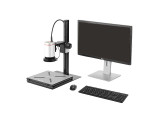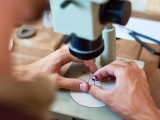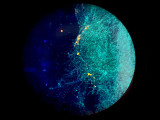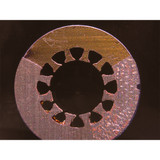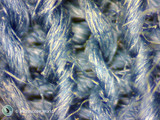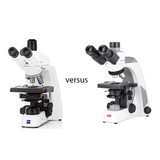Using a 4K Digital Microscope for Optical Inspection
Apr 21st 2025
Why Choose a 4K Digital Microscope for Optical Inspection Tasks?
Digital microscopes capture images digitally and can integrate high-resolution sensors, software for measurement and analysis, and can employ modular designs for industrial or scientific applications. Traditional optical microscopes rely on optical viewing through eyepieces, which can provide greater image quality and a greater range
…
Jeweler's Microscope Features and Benefits
Apr 15th 2025
A gemology microscope is a specialized optical instrument designed specifically for the detailed examination of gemstones, jewelry, and small intricate objects. Here are the key features and benefits that make it essential for jewelers:
Key Features of Gem Microscopes:
Stereoscopic Viewing - Provides a true three-dimensional image that allows jewelers to perceive depth, crucial for examining face
…
The Role of Microscopy in Environmental Science: Studying Microplastics
Apr 3rd 2025
Microplastics are everywhere—in our oceans, rivers, soil, air, and even the food we eat. These tiny plastic particles, less than 5 millimeters in size, have become one of the most pressing environmental concerns of our time. As scientists work to better understand the impact of microplastics on ecosystems and human health, one essential tool continues to lead the way: the microscope.
What Ar
…
What is a Phase Contrast Microscope Used For?
Apr 1st 2025
What is Phase Contrast?
Phase contrast is a powerful microscopy technique primarily used to visualize transparent and colorless specimens without the need for staining procedures that might damage living cells. By converting small differences in the optical path length into variations in light intensity, phase contrast allows scientists and students to observe the internal structures of living cel
…
Student Microscopes: 7 Best Tips for Selection
Mar 26th 2025
Student Microscopes
Choosing the right microscope can be challenging, especially if you're not an expert. This guide will help students and educational buyers make an informed decision, ensuring you get the most value and best learning experience.
1. Microscope Magnification Power
Microscope magnification is crucial for educational purposes. Look for:
Compound microscopes with magnification rang
…
How to Clean a Microscope
Mar 25th 2025
Microscope maintenance is crucial for ensuring accurate observations and prolonging the life of your valuable instrument. When cleaning a microscope, you'll want to approach the task with care, precision, and the right tools. Here are the most important steps for basic cleaning:
Preparation is Key
Always work in a clean, dust-free area when cleaning your microscope.
Wash and dry your hands thorou
…
Stereo Microscope Inspection Guide for Quality Control
Mar 24th 2025
Why Use a Stereo Microscope?
A stereo microscope provides critical advantages over naked eye inspection for quality control.
Magnifies surface details 10-40x larger than visible to human eye.
Creates a 3D view of surface parts.
Allows precise detection of minute defects impossible to see otherwise.
Provides consistent, objective assessment of quality
Reduces human error in visual inspection.
Ins
…
What Are Stereo Microscopes Used For?
Mar 24th 2025
Discovering the World of Stereo Microscopes: A Close-Up Adventure
Imagine having a superpower that lets you see incredibly tiny details of objects without squishing or changing them - that's exactly what a stereo microscope does! Unlike traditional microscopes that look at super tiny cells, stereo microscopes are designed to give you a 3D view of larger small things with some amazing applications:
…
What is a Microscope Used For?
Mar 20th 2025
Microscopes are used to magnify and observe tiny objects, organisms, and structures that are too small to be seen with the naked eye, allowing scientists and students to explore and understand the microscopic world.
What is the Purpose of a Microscope in Scientific Discovery?
Light microscopes are essential scientific instruments that allow us to see objects too small for the naked eye. These powe
…
How to Center a Microscope Condenser: Step-by-Step Guide
Mar 20th 2025
A Step-by-Step Guide on How to Center your Microscope Condenser
A compound light microscope focuses the light through a condenser beneath the microscope stage. Follow these steps to center your microscope condenser.
Start with the Basics- Ensure the microscope is on a stable surface.- Use the 4x objective (lowest magnification) to start- Make sure the condenser is raised up all the way. View info
…
How to Measure Steps with a Digital Caliper
Mar 9th 2025
Because of their industry standard accuracy of 0.01mm and ease of use, calipers are indispensable measurement instruments that are frequently utilized. In addition to preventing misreading, digital calipers are an essential first step in gathering measurement data toward loT-driven measurement collection.
How to Measure Steps with a Digital Caliper
The video below details how to perform step measu
…
How to Use Digital Calipers
Mar 9th 2025
Calipers are essential measuring tools that are widely used for their ease of use and 0.01mm precision, making them an industry standard. Digital calipers not only help prevent misreading but also serve as a key step toward loT-driven measurement data collection.
How to Use a Digital Caliper
The video below details how to properly use a digital caliper for direct measurement and comparative measur
…
A Comprehensive Guide to Confocal Microscopes
Jan 16th 2025
Confocal microscopes are essential tools in scientific research and industrial applications, offering unparalleled imaging precision and clarity. In this guide, we’ll explore what confocal microscopes are, how they work, their applications, and the different types available to suit various needs.
What is a Confocal Microscope?
A confocal microscope is an advanced optical imaging device desig
…
What Is a Digital Microscope?
Dec 19th 2024
A digital microscope is an advanced optical device that combines the traditional functionality of a microscope with modern digital imaging technology. Unlike conventional microscopes, which use eyepieces to observe specimens, a digital microscope captures images and videos of the magnified subject and displays them on a computer screen or built-in monitor. This technology not only makes viewing mo
…
Microscope Image Comparison: ZEISS Primostar versus Motic Panthera
Nov 17th 2024
Recently, we looked at images on two different microscope systems: the ZEISS Primostar 3 and the Motic Panthera. We wanted to compare the images captured with both of these microscopes.
For both microscopes, the same digital camera was used to capture the images, a 5 megapixel microscope camera (the DCM5.3). Images displayed were captured with a 100x objective lens. For the ZEISS Primostar 3, the
…

